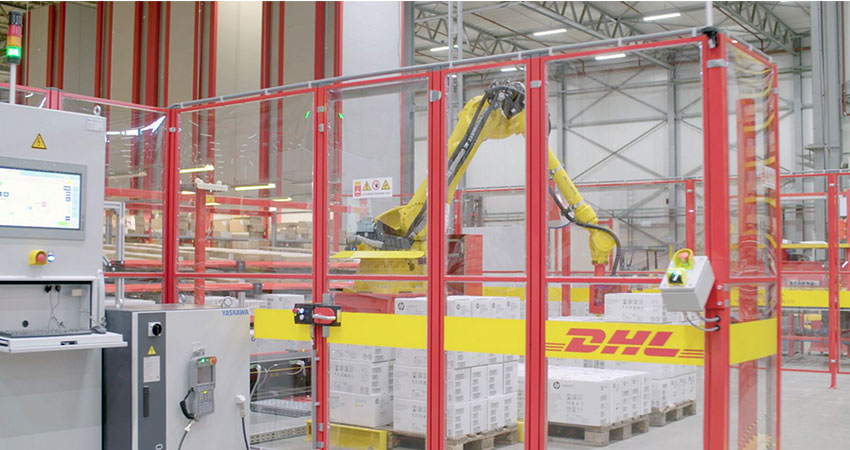DHL eCommerce, the U.S. unit of the German logistics giant Deutsche Post, is investing more than $300 million in facilities and automation over the next five years, increasing its square footage here by 70%, automating its 19 distribution centers and upgrading its IT systems.
Part of the investment will focus on DHL’s growing global ecommerce business, including new dedicated export gateways for international shipments in Carteret, NJ (opening this month), Franklin Park, IL (opened in July) and Whittier, CA (opened at the end of 2020, expanded this year).
Lee Spratt, CEO of DHL eCommerce, based in Weston, FL, said adding facilities is one thing, but ensuring sufficient throughput to satisfy customers is “critical,” which is why the company is heavily focused on investing in automation.
“We’re adding 35 separate pieces of automation, including line and loop sorters, and we’ve had good success with robotic arms,” Spratt said. “The arms themselves aren’t that expensive, it’s the software, the intelligence that gets smarter and smarter. We have been doing a fair amount of manual sortation to the (U.S. Postal Service) DDUs, but we’re working now with different (automation) providers, doing testing and seeing some very promising results.”
DHL eCommerce is a workshare partner of the USPS, meaning it sorts parcels, ships them and injects them into the USPS network for last mile delivery. Spratt said 94% of DHL’s parcels are DDU injections, except in less dense rural areas, where they go to a USPS sortation center.
He said while the USPS caught a lot of heat last peak season for its delivery performance, the agency did “a phenomenal job” under the circumstances, especially given the fact that UPS and FedEx dumped so much unwanted volume on it in Q4 as their own networks were overrun.
“As far quality of service goes, they were right there with the rest of the industry, even merchants out west that had their own delivery services – some of their quality numbers were not up to specs. The USPS was right there with everyone else, and maintained very good service levels.”
A major emphasis this year, Spratt said, is working more closely than ever with its merchant customers on improving Q4 forecasts to ensure sufficient capacity and efficient operations.
“I believe the focus on forecasting for peak is greater than it’s ever been,” he said. “The past year or so has been a wake-up call, with carriers telling them ‘This is what I can take, and over and above I won’t pick up the truck.’ Most merchants have gotten better, they know the challenges of adding more volume to parts of the network. Forecasting is a number-one priority, to make sure we can deliver what consumers expect.”
Spratt said DHL eCommerce benefited when shippers had volume refused in Q4 2020 by the major carriers, and has worked hard to manage its own capacity, service levels and customer expectations.
“We gained a lot of credibility with existing customers, and new ones looking for outlets to send volume the other two didn’t want to take,” he said. “It’s really paying dividends in 2021 in terms of brand name customers we picked up. If you go to the mall, you’ll see their names. That strategy helped us quite a bit.”

